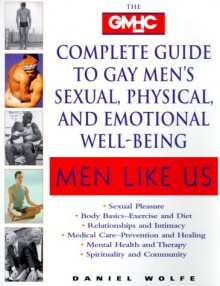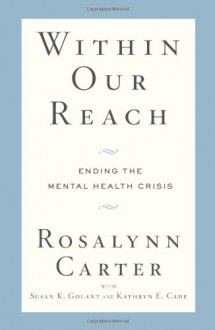
Thanks to NetGalley and to Titan Books for providing me an ARC copy of this novel that I freely chose to review.
I have read a number of glowing reviews of Tremblay’s novels and being a horror fan, I was eager to read one of his books. When I found this one was available for request and read the description, I requested it although wondering if, in the current situation, I’d dare to read it. Then I read a review of it by one of the reviewers of horror I trust and decided to take the plunge. I’m pleased to report it was the right decision.
The description does justice to the plot. This is one of those novels that seem to start with a big “What If” , and we have a clock ticking to ramp up the tension. The fact that the situation has become familiar and requires far less suspension of disbelief than it might have when it was written adds nuance to the story and also increases the chill factor. Yes, the details are different (there is a virus, but it is a variety of the rabies virus rather than a coronavirus, and therefore the illnesses are very different, thankfully), but the background situation and the consequences of the health emergency are eerily similar (lack of resources, lack of PPE, confusion, hospitals overwhelmed, lack of coordination, fake news, conspiracy theories, nay-sayers, heads of governments ignoring scientific advice…). Rather than going large, the author bring the crisis to a personal level, focusing on the story of two women, one British who emigrated and studied Medicine in the US, Ramola, or Rams, and the other, her best friend, Natalie, Nats, married and in the late stages of pregnancy. They shared an apartment while they were students, and although their lives have changed, they’ve kept in touch. Things go wrong very quickly, and Ramola is soon forced to make decisions that place her professional duty in the balance against her friendship. Would you put your duty to society before your friendship or your love for your family? This is a question many of us have probably wondered about, and many have been force to face for real in recent times.
The story turns into a nightmarish road trip where almost everything is against the protagonists. There are infected animals (and people) on their way, roadblocks and rogue patrols wondering the streets, and every time they seem to get a break, a new obstacle or delay makes survival more and more difficult. And, of course, we have the illness itself, which turns humans (and animals) into raging wild beasts.
I have mentioned some of the themes, and although this is a dystopian story that feels like reality at the moment (unfortunately, reality is looking grimmer than this novel’s scenario), and it does have much in common with zombie stories (no matter how insistent Rams is that the infected are not zombies, and, of course, they are not dead but ill, their behaviour is quite similar), it is also a story about friendship and the families we create. We have not only Ramola and Nathalie, who are like sisters, but also other characters (especially a couple of teenage boys, Luis and Josh, who are like brothers, share a dark secret, and whose story is given space as well). There is no lack of social commentary either: there is a strong indictment of the lack of training, of PPE, and of resources in general that hospitals and health providers have to contend with, and also support for the usefulness (indeed need) of vaccines and vaccination campaigns. (Tremblay explains at the end that his sister works at a small hospital and she gave him a lot of information. They make a great team). Although none of it is original, it does work well, and the focus on only a few characters makes it very compelling.
The story is written in the present tense (for the most part), in the third person, although the chapters alternate between the points of view of Natalie and Remola in the three main parts of the novel. There are also a prelude, and interlude, and a postlude, which are told from a seemingly omniscient viewpoint, where the narrator provides a frame and a commentary on the story itself (we are told this is not a fairy tale, it is a song, and we are also given information about the larger scale of things, and even told about the future). My experience with present tense narration has not always been good, but I felt it worked well here, as it makes readers feel as if the story was taking place right now, and as the main narrative develops over a few hours, it does bring home the relativity of time, how two minutes can feel like two hours, or vice versa. The book has some lyrical passages, and it’s particularly strong when reflecting the way our minds can wander even at the most inconvenient moments, and how we all have our own protective mechanisms (telling ourselves stories, taking refuge on events from the past, fairy tales…). The author writes fluidly and he makes good use of the alternating points of view, and of other devices, like Facebook chat pages, the video diary Natalie is keeping for her child… This also provides variety and a bit of a break from the tension of the story.
I’ve read some reviews where people didn’t like the book because they didn’t like the main characters. It is true that because of the way the story is told, if you don’t connect with the two protagonists, I don’t think the story will work. We don’t know everything about the two characters straight away, as much is revealed through the novel, as they think about the past, about shared experiences, and also about the future. For me, the relationship between the two characters felt real. They often knew what the other person was thinking, they cared for each other and it was like reading or witnessing the interaction between two close friends, where not everything needs to be said, and there is a lot of background to the relationship that will not be evident to strangers. Being a doctor, I probably felt closer to Ramola and her difficult situation, but I enjoyed the story and I also got to like Luis and Josh (and some of the minor characters as well).
The ending… Well, if there wasn’t a postlude, the ending would be ambiguous but the postlude makes up for it, and we get a satisfying ending (if not particularly surprising). I confess I’m not a fan of happy endings for horror novels (or films), but this is not standard horror, and despite the warnings about this not being a fairy tale, I do think it reads like a fairy tale for adults (or a scary tale). And perhaps the ending is right for the times we are living. Let’s hope…
So, yes, I recommend this novel to fans of Tremblay, and to readers of horror or dystopian fiction in general. I’d advise readers to check a sample, in case the present tense narration doesn’t work for them, and if you prefer your stories big and your disasters of world proportions, this is not that kind of story. Although the focus is on a couple of characters (mostly), there is plenty of violence, blood and guts, so I wouldn’t recommend it to those who prefer their thrills to be subtle and understated. Also, if you are concerned about reading this story right in the middle of a pandemic and are very anxious about the news, I’d recommend waiting for a while before reading it, because it does hit very close to home. I look forward to reading more novels by this author.

 Log in with Facebook
Log in with Facebook 







